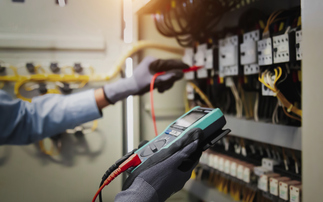The falling cost of technology will help drive the global transition to low-carbon energy, says oil giant
Yesterday, BP published its first Technology Outlook, an 82-page report outlining how technology has the potential to unlock the world's energy resources over the next 35 years.
Bringing together previously internal analysis from BP's energy experts, the document predicts the world will have a plentiful supply of affordable energy through the next few decades thanks to advances in all forms of energy technologies - from battery storage innovations to better extraction techniques for oil.
BP predicts the global energy system will remain heavily reliant on fossil fuels for decades to come. However, it also envisages strong growth potential for clean energy systems and supporting technology such as battery storage and electric vehicles.
BusinessGreen outlines five key predictions for the clean energy sector from the report:
1. Fossil fuels resources are abundant - but climate action could curb supply
Advances in extraction techniques will help companies maximise the remaining reserves of oil and gas, leaving supply secure for decades, according to BP. Using the best extraction technology available today, BP estimates 4.8tr barrels of recoverable oil or oil-equivalent resources in the world. However, it acknowledges that climate action may well impact how much of this can be used.
"Governments, supported by many businesses and citizens, are increasingly seeking to limit carbon emissions by using less energy and shifting towards lower-carbon fuels," the report says. "This is likely to have an impact on the proportion of these resources produced, relative to other forms of energy."
2. The costs of solar and onshore wind will continue their swift descents
The cost of onshore wind power will fall by 14 per cent with every doubling of cumulative installed capacity, while the cost of solar will drop by 24 per cent with every doubling, according to BP predictions. This is thanks to the litany of small components that make up renewable energy systems declining in cost much faster than larger, more capital-intensive modules such as nuclear reactors.
Between 2030 and 2040 BP predicts solar will break through the 30 per cent efficiency rate. Advances in offshore wind farms will include design technologies to support taller towers, the development of new materials for larger blades, and better sensors to allow for aerodynamic control throughout the blade length.
3. Carbon pricing will have a massive impact on the competitiveness of renewables
Without a carbon price, gas and coal will remain the lowest-cost options for generating electricity in North America through to 2050, according to the BP analysis. However, with the introduction of a relatively modest carbon price of $40 per tonne of CO2, new-build gas and renewables will start to displace coal.
With a higher carbon price - $80 per tonne of CO2 - onshore wind will be cost-competitive with natural gas by 2050, according to BP. This is based on analysis that applies a grid integration cost to renewables because of their intermittent energy supply.
4. Major advances in energy storage are on the horizon
The large-scale deployment of renewables will play havoc with electricity networks, according to BP. Curtailment will become a common issue as grids struggle to manage the intermittency of supply from renewable sources.
In the short term, BP proposes that flexible generation systems - such as gas-fired power stations for back-up generation - are the most immediate solution to intermittency issues. However, over the medium and long term smart grids and demand response will help to alleviate problems caused by intermittent supply, BP predicts.
In particular, the price of energy storage systems is set to plummet over the next three decades. The report quotes Bloomberg New Energy Finance (BNEF), which predicts the average cost of residential stationary energy storage systems will fall from $1,600 per KWh in 2015 to below $1,000 per KWh in 2020, and $260 per KWh in 2040.
"Stationary energy storage for electricity-grid services is disruptive in its capacity to support the integration of renewable energy sources with the electricity grid," the report says.
5. Electric vehicles are the future of city driving
Advances in battery technology mean electric vehicles will increasingly become a "viable option" for many consumers - particularly for urban drivers battling stop-start traffic and increasingly stringent limits on vehicle emissions, according to BP.
Economies of scale, coupled with tech breakthroughs, will push down the cost of electricity storage for vehicles in the coming decades. BP predicts the cost per km for a medium-sized electric car in the US will fall from 26.2 US cents in 2012 to 14.3 US cents by 2050. In comparison, the cost of driving a gasoline-powered car will rise from 11.4 US cents per km to 12 US cents per km. "In the medium to long term, we can expect progressive decarbonisation in the transport sector with a greater move toward hybrid and electric passenger cars," the report says.
Meanwhile, next-generation batteries - such as rechargeable lithium sulphur batteries - are expected to increase energy capacity threefold by 2025, from 150Wh per kg to 450Wh per kg. These next-generation batteries could be established in the electric vehicle market by 2030, according to BP.









